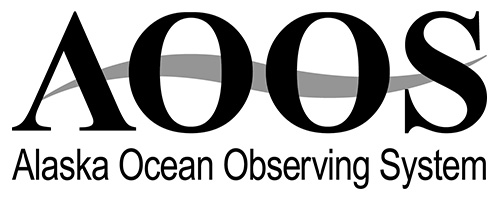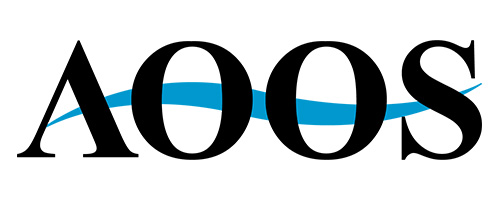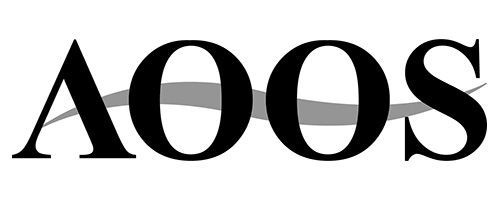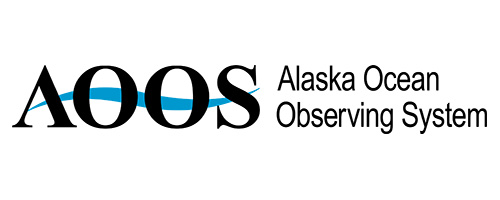Resources
Workshops and Reports
Reports
- 2021-2026 AOOS Strategic Vision
- 2022 AOOS Highlights
- 2021 AOOS Impact Report
- 2020 AOOS Impact Report
- 2019 AOOS Impact Report
- 2018 AOOS Impact Report
- 2017 AOOS Impact Report
- 2016 AOOS Impact Report
- 2016-2020 AOOS Strategic Operations Plan
Workshops
- Alaska Water Level Watch Workshops
- National Coastal Ecosystem Moorings Workshop Report 2018
- National Strategy for a Sustained Network of Coastal Moorings 2017
- Animal Telemetry Network Workshop Report in Alaska 2017
- 2020 White House Ocean Partnership Workshop Report
- 2016 Scoping the Approach and Priorities for Ocean Acidification (OA) Monitoring Activities in Alaska Workshop Final Report
- 2015 Exploring Options for an Integrated Water Level Observation Network in Alaska
NOAA Cooperative Agreement
AOOS receives its core funding from five-year NOAA cooperative agreements with the national Integrated Ocean Observing System (IOOS) Program. Funds are used to complete the projects and priorities approved by the AOOS Board in consultation with our stakeholders through a variety of engagement mechanisms.
We are currently working under two NOAA cooperative agreements; #NA16NOS0120027 awarded in 2016 originally ending in 2021 and now extended to 2023, and #NA21NOS0120094 awarded in 2021 ending in 2026.
2016-2021 NA16NOS0120027
Under the 2016-2021 agreement, the original request was for $20M at $4M per year. Once the IOOS Program receives its annual funding from Congress, AOOS is notified of the amount we will actually receive for the year which is usually less than the original amount. AOOS then submits an annual proposal de-scoped to the actual amount awarded.
- 2020 Descoped Proposal
- 2019 Descoped Proposal Addendum
- 2019 Descoped Proposal
- 2018 Descoped Proposal
- 2017 Descoped Proposal
- 2016 Descoped Proposal
Semi-annual reports for each fiscal year of the cooperative agreement are submitted to NOAA in December and June. List of links to Semi-annual reports for:
- June 2022
- December 2021
- June 2021
- December 2020
- June 2020
- December 2019
- June 2019
- December 2018
- June 2018
- December 2017
- June 2017
- December 2016
2021 – 2026 NA21NOS0120094
Under the 2021-2026 agreement, the original request was for $27M at $5M per year. Once the IOOS Program receives its annual funding from Congress, AOOS is notified of the amount we will actually receive for the year which is usually less than the original amount. AOOS then submits an annual proposal de-scoped to the actual amount awarded.
- 2021 Descoped Work Plan
- 2022 Descoped Work Plan – Core Funding
- 2022 Descoped Work Plan – Non-Core Funding
- 2023 Descoped Work Plan – Core Funding
Semi-annual reports for each fiscal year of the cooperative agreement are submitted to NOAA in January and July. List of links to Semi-annual reports for:
Newsletters
Printed Newsletters
Executive Updates
Logos
Below are three approved downloadable versions (in two color modes each) of the AOOS logo. There are two vector-based formats (AI, EPS) and two pixel-based formats (JPG, PNG). Pixel-based files are generally used for in-house applications and for situations where the logo will be viewed only on a screen or monitor. Vector-based files are generally used for print-related applications like ads, brochures, and displays. They can be scaled up or down with no loss of image quality but may not be compatible with some programs/apps. Pixel-based files are the most common formats for in-house uses and for screen display. They can be reduced in scale, but they should not be scaled up.
MAIN VERSION

Color / for printing
AI (1.1 MB)
EPS (1.1 MB)
Color / for screens
JPG (781 KB)
PNG (53 KB)

Grayscale / for printing
AI (1.1 MB)
EPS (1.1 MB)
Grayscale / for screens
JPG (199 KB)
PNG (53 KB)
LOGOMARK

Color / for printing
AI (1 MB)
EPS (1.1 MB)
Color / for screens
JPG (122 KB)
PNG (31 KB)

Grayscale / for printing
AI (1 MB)
EPS (1.1 MB)
Grayscale / for screens
JPG (95 KB)
PNG (32 KB)
HORIZONTAL VERSION

Color / for printing
AI (1.1 MB)
EPS (1.2 MB)
Color / for screens
JPG (232 KB)
PNG (70 KB)

Grayscale / for printing
AI (1.1 MB)
EPS (1.2 MB)
Grayscale / for screens
JPG (201 KB)
PNG (71 KB)
